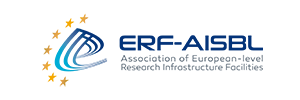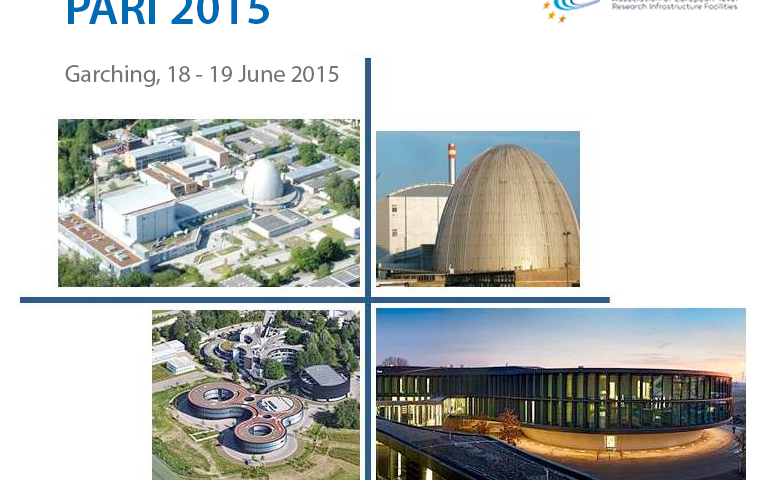Workshop on Public Awareness of Research Infrastructures I
"Expectations, Experiences, Examples"
Garching, 18-19 June 2015
A common task at research infrastructures is to present to their funding bodies as well to the national scientific organisation the research they conduct with their considerable budget. A similar expectation on public relations (PR) and dissemination concerns large EU funded projects as I3s or bigger consortia. Even though a consensus exists, that good communication is a fundamental part of innovation, the expectations from the funding bodies with regards to science communication activities are unclear, and a well-defined work programme is often missing.
The aim of the workshop is to bring together representatives of funding agencies (European and national) with facility and project managers to discuss what should be expected from scientific dissemination activities. Furthermore it should be a forum for PR and information officers to share experience of their work and gain insights into the expectations of funding bodies as well as from the general public.
Who should attend?
- Representatives of funding agencies (European and national organisations) and managers of research infrastructures, research organisations, EU projects, and consortia to express their expectations on science communication activities.
- Press officers and information managers of research infrastructures and research projects to share their experience on the cross-cutting area between meeting expectations on the impact of PR activities and the difficulties to raise European public awareness of science.
- Experts from academia dealing with the topics of communication and public understanding of science.
- Journalists involved in science policy and dissemination.
Main Topics
- What do the EU and funding organisations expect from public relations?
- How is public relations organised at research infrastructures?
Parallel Sessions
- Public engagement with large scale facilities.
- Communication to target groups.
- PR of a facility under construction.
- Risk Communication.
- Best Practice.
- Using social media for wide spread communication.
Time
Starts
- 18 Jun 2015
Ends
- 19 Jun 2015
Full Timetable:
Other Resources
Venue
Karl-Schwarzschild-Str. 2
85748 Garching
Germany Registration fee 150€ (including access to workshop and social dinner in Munich's city centre) Contact Contact us at workshop@frm2.tum.de Directions
The Munich FJS Airport is 17km north-east of Garching. The easiest way to get to Garching or ESO Headquarters from the Airport is by taxi. The fare is about EUR 40 and takes roughly 15 to 20 minutes.
Alternatively, if you wish to use Public Transport, you can take the train (S-Bahn S8) from the Airport to Ismaning (20 min.; EUR 6,20) and from there either a taxi (EUR 12-15) or Bus 230 (first bus at 06:11 and then every 20 or 40 minutes until 18:52 on weekdays). Please note that Bus 230 only goes to Garching-Forschungszentrum on working days (Monday - Friday), with a stop in Garching. There is an hourly taxi service from Ismaning to Garching on Saturdays and Sundays. For detailed information, please check the Bus 230 time table. Ticket: “Single Day Ticket outer district".
Or, take the S1 train from the airport to Neufarhn (5min) and there take Bus 690 to Garching Forschungszentrum (total journey time is about 40min, EUR 6,20). Ticket: “Single Day Ticket outer district"
To reach ESO from the Bus stop, please see this map.
The easiest way from the Main Railway Station is to take a taxi to Garching or ESO Headquarters (the fare is approximately EUR 40).
Alternatively, if you wish to use Public Transport (single fare: EUR 5.40), take the S-Bahn (underground railway) from the Main Railway Station to Marienplatz and then the U-Bahn U6 to Garching-Forschungszentrum. Exit the train in the station Garching for the town of Garching and Garching-Forschungszentrum if you want to get to ESO Headquarters.
There is a system of motorways (Autobahn) and ring-roads in and around Munich. For details see the schematic map. Follow these to the Autobahn for Nürnberg (A9). To reach Garching there are two turnoffs (Ausfahrt): Garching-Süd (Garching-South) and Garching Nord (Garching North). Both exists lead you directly into the town of Garching.
If you wish to get to ESO Headquarters, you need to take the turnoff Garching-Nord (Garching-North), which leads you directly to the "Forschungsinstitute" area. Go straight ahead at the traffic lights and continue until the road makes a sharp turn to the left. Do not turn left: ESO is straight ahead.
Organising Institutions
 |
The Heinz-Maier-Leibnitz Zentrum (MLZ) is a leading centre for cutting-edge research with neutrons and positrons. It represents the cooperation between the Technische universität München (TUM) and the three research centres of the Helmholtz Association: the Forschungszentrum Jülich, Helmholtz-Zentrum Geesthacht, and Helmholtz-Zentrum Berlin. |
 |
The ERF-AISBL Association has the not-for-profit purpose to promote the cooperation and the projects between european-level research infrastructures which are open, at international level, to external researchers. These infrastructures include national infrastructures as wel as european networks and consortia of research infrastructures. |
 |
European Southern Observatory (ESO) is the pre-eminent intergovernmental science and technology organisation in astronomy. It carries out an ambitious programme focused on the design, construction, and operation of powerful ground-based observing facilities for astronomy to enable important scientific discoveries. ESO also plays a leading role in promoting and organising cooperation in astronomical research. |


